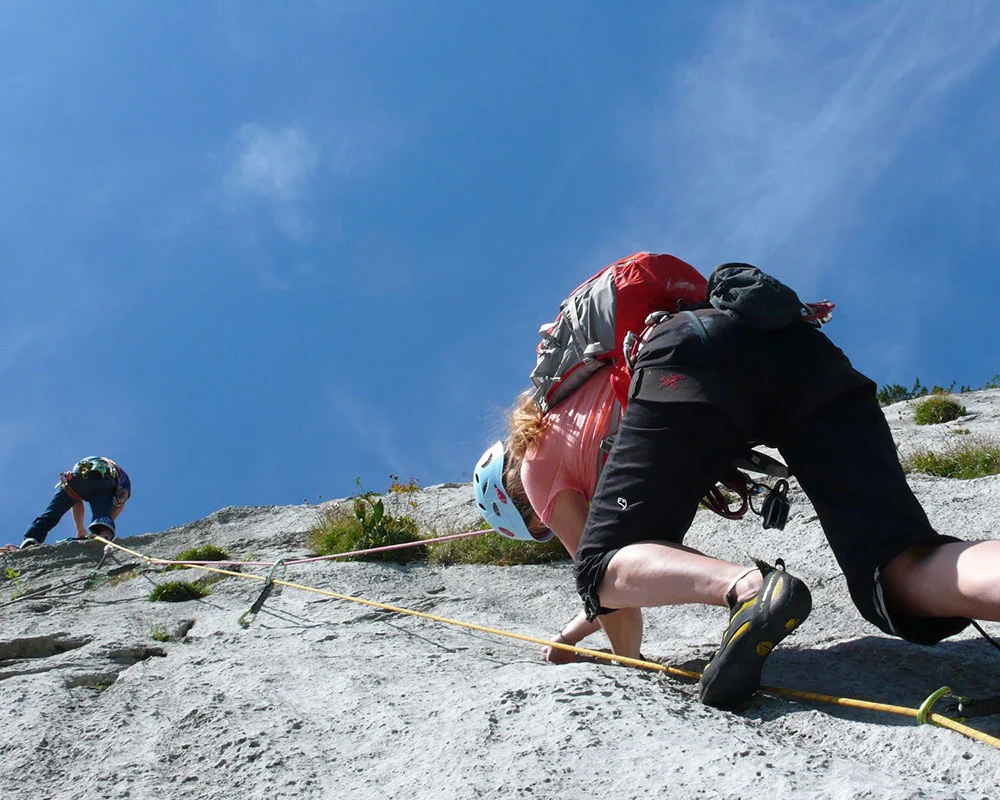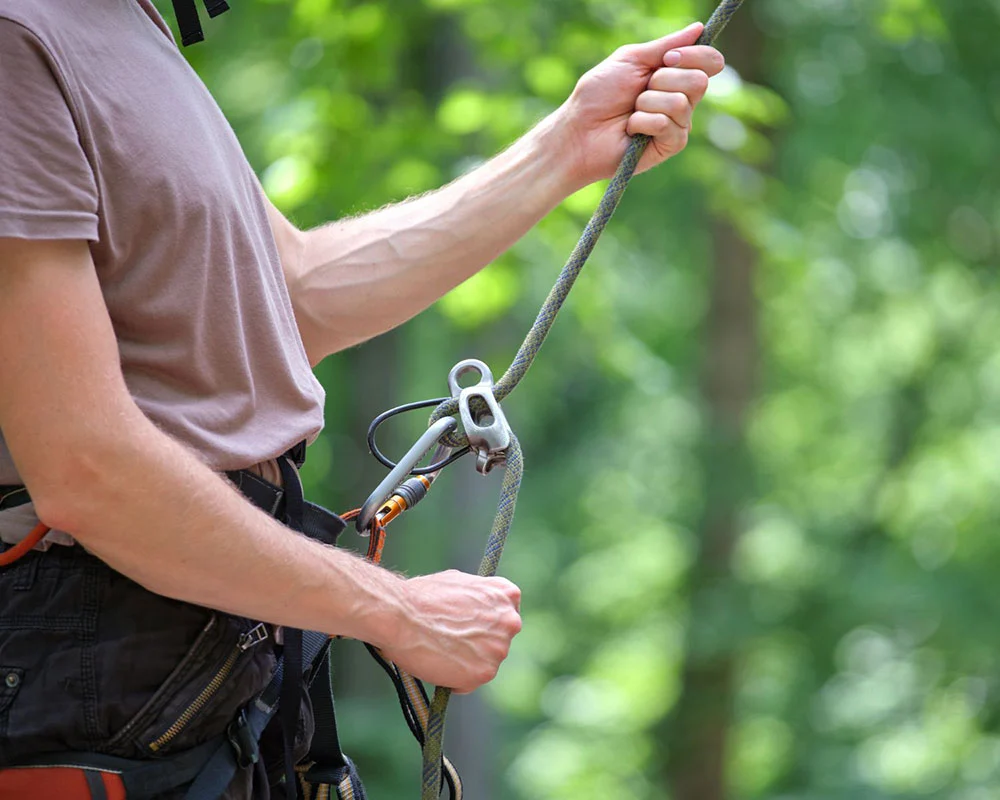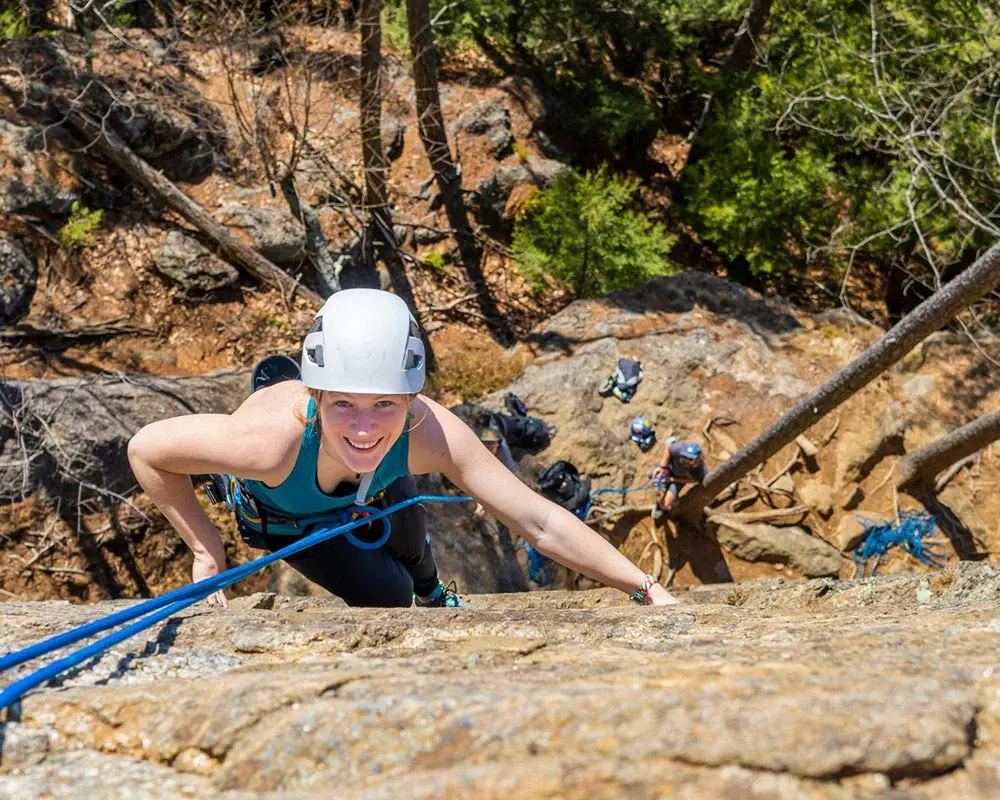Have you ever wondered if you have the ideal body type for rock climbing, specifically focusing on ‘What is the best body type for rock climbing?’
Let’s put that idea to rest.
There is no such thing as the best body type for rock climbing. You see, this sport goes beyond the physical aspect. It also engages the mind and body, requires strength, willpower, endurance, and mental fortitude.
There is a common misconception that only a specific type of physique should rock climb.
We’re going to debunk that myth and show everyone that no matter what size or shape you’re in, you still have the potential to excel in rock climbing.
Key Takeaways
- There is no singular “best” body type for rock climbing, as success in the sport relies on a combination of different strengths and skills.
- While certain body types may have advantages in terms of reach or strength, climbers of all sizes and shapes can excel with the right training and dedication.
- Tall climbers can leverage their reach advantage by focusing on upper body strength and maintaining a lean physique to overcome the added weight.
- Small climbers can utilize their lower center of gravity and superior technique to navigate routes effectively, compensating for limited reach.
- Lean climbers benefit from having less excess weight, allowing them to move more efficiently. Building overall strength is essential for success in rock climbing.
- Strong climbers should focus on developing explosive power through dynamic movements while maintaining flexibility. A combination of strength training exercises and cardio workouts is crucial for optimal performance.
- Understanding your individual body type is key in tailoring your nutrition and exercise routines to optimize climbing performance, regardless of whether you are an ectomorph or endomorph.
The Ideal Body Type for Rock Climbing
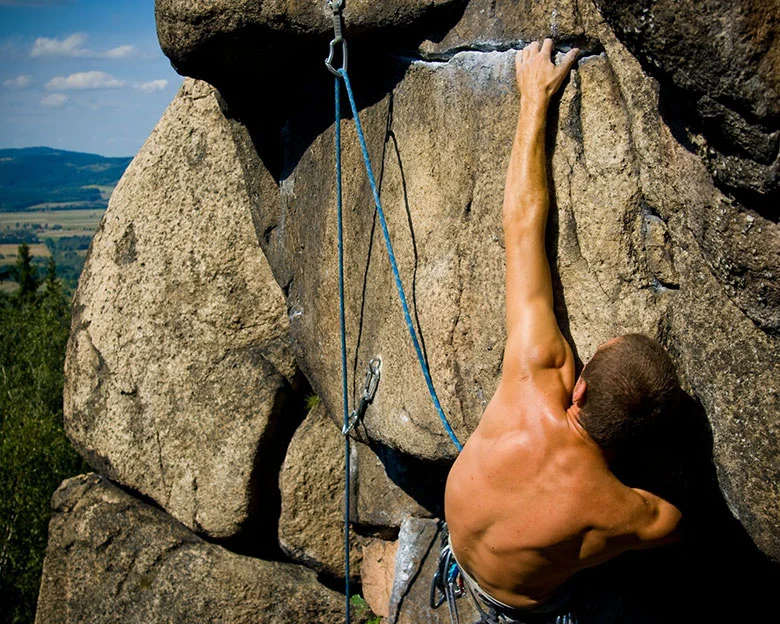
Rock climbing pushes your body to the limit, demanding a perfect blend of strength, flexibility, and endurance. The best-recognized physique for this high-intensity sport typically involves the following
- broad shoulders paired with smaller hips and legs
- muscular but not excessively bulky build
- low levels of body fat.
A lean silhouette is often associated with successful climbers. This is a direct result of serious involvement in the sport, frequent climbing activities, and strength training.
Climbers also benefit from longer limbs to reach holds easily on the wall—ideally 3-5 inches more than their height. However, it’s important not to become fixated on one ‘ideal’ image as rock climbing isn’t just about physicality alone.
Your mental toughness and technique are equally important factors that contribute towards success in this sport. The best body for rock climbing is a balance of strong muscles and low body weight. You need strong muscles for difficult moves and less overall weight for easier climbs. It’s all about finding the right balance!
Remember that each climber presents unique skills that may compensate for any perceived deficiency linked to their particular body type.
But don’t let metrics deter you. Focus on building strengths and improving weaknesses through targeted exercises tailored specifically for your individual physique whether you’re an ectomorph requiring increased muscle mass or an endomorph aiming to reduce excess fat!
Ultimately, there’s no singular ‘best’ body type in rock climbing—all bodies can climb!
The Anderson brothers have put forth an ideal weight advice targeting 10% body fat for male climbers while suggesting 20% as the ideal figure for female athletes. This is a general fitness goal worth considering despite your specific body type.
Mark and Mike Anderson were pioneers in authoring books and training materials for climbing like “The Rock Climber’s Training Manual: A Guide to Continuous Improvement”. They continue to release training materials that take a scientific approach to climbing to help others who wanted to learn more about the sport.
Body Types for Rock Climbing
When it comes to rock climbing, climbers can be grouped into four broad body type categories: tall, small, lean, and strong.
Tall
Being a tall climber comes with a set of advantages. For starters, longer limbs equals longer reach. This allows you to access holds that might be out of range for shorter climbers.
Longer reach also means more body positioning options while climbing and bouldering.
However, let’s not overlook the fact that being tall requires stronger upper body strength to hoist the additional weight upwards effectively.
Maintaining a leaner physique becomes imperatives in this case as excess weight can hinder your performance.
A powerful core is also essential to help stabilize those long limbs against gravity and provide better control over movements.
For taller climbers, strength and endurance training, supplemented by a diet tailored to meet higher metabolic needs, can help improve overall climbing performance.
Small
Being smaller can work to your advantage, particularly in maintaining flexibility and agility. Smaller climbers have a lower center of gravity, providing more stability, making balanced maneuvers easier.
Smaller climbers can also use holds that may be uncomfortable to reach for taller climbers. There’s an opportunity for smaller climbers to develop superior technique and footwork to compensate for their limited reach.
Use your size to your advantage by capitalizing on strength-to-weight ratio as well as the ability to fit into tight spaces on the climbing wall.
Lean
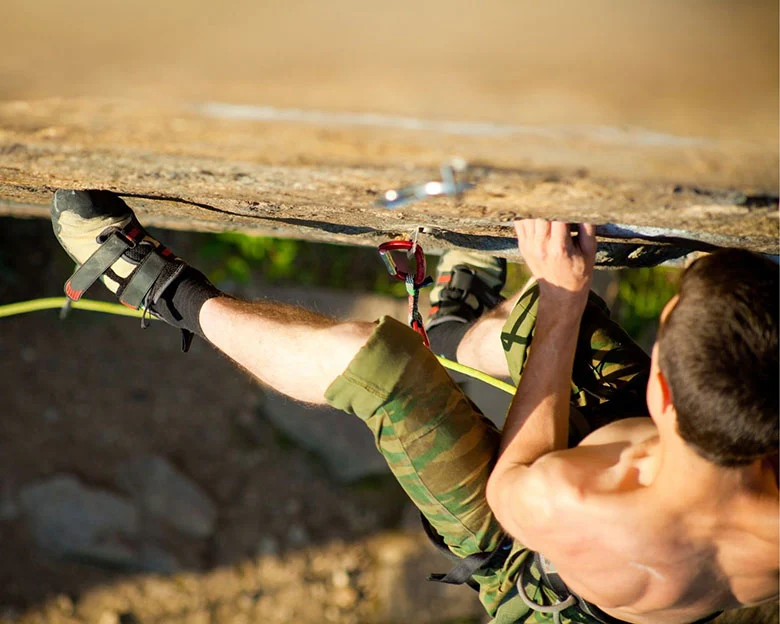
Having a lean body type can be extremely advantageous for rock climbing.
Lean climbers tend to have less excess weight, which allows them to move more efficiently and easily on the rock. With less bulk to carry, they can navigate through challenging routes with greater agility and speed.
Being lean also helps climbers maintain good grip strength and flexibility, which are crucial for reaching and holding onto holds.
While having a lean physique is beneficial for climbing, it’s important to remember that rock climbing is a sport that requires a combination of different strengths and skills.
For lean climbers, focusing on building overall strength and maintaining flexibility will help you excel in rock climbing.
Strong
Strong muscles are essential for rock climbing. When you have strong muscles, it becomes easier to grip and pull yourself up on the wall.
Additionally, having good upper body strength allows you to maneuver your body effectively and reach holds that may be out of reach for others.
Being strong doesn’t mean you have to be bulky. Climbers often have lean, well-defined muscles that provide the power needed for climbing.
Focus on exercises that build your core strength, such as planks and hanging leg raises, as these will help improve your overall stability while climbing.
With a strong physique, you’ll be able to tackle challenging routes with confidence and ease.
Ectomorphs
Ectomorphs are often associated with bouldering rather than rock climbing with their slim and sleek bodies. Leaner physiques can navigate challenging routes more easily and efficiently.
Research also shows that climbers with a lower body fat percentage tend to have greater success in rock climbing.
Ectomorphs need to work harder to build upper body strength and muscle compared to other body types. But, their quick metabolism can be an advantage in keeping their weight down.
Mesomorphs
Mesomorphs are often considered to have the ideal body type for rock climbing. They have naturally athletic physiques with large muscles. They also possess the strength and agility necessary to execute various rock climbing maneuvers.
Mesomorphs have a low body fat percentage to muscle ratio, which further enhances climbing performance. They gain muscle quickly which is important for developing the upper body strength needed for scaling challenging routes.
If you’re a mesomorph, work on improving your endurance for longer climbs. You can achieve this through a combination of strength training exercises, cardio workouts, and a low-fat diet.
Endomorphs
Endomorphs face certain challenges when it comes to rock climbing with their higher body fat percentage.
Climbing places a strong emphasis on strength, agility, and endurance, which can be more difficult for individuals with a higher body fat percentage.
However, this does not mean that endomorphs cannot participate in or excel at rock climbing. With specific training programs tailored towards improving endurance and shedding excess weight, endomorphs can still enjoy the sport and enhance their performance on the wall.
Understanding your individual body type is essential in tailoring your nutrition and exercise routines for optimal climbing performance. So while mesomorphs are often seen as having an advantage due to their athletic physique and large muscle mass, rock climbing is a sport that welcomes individuals of all body types with the right training and dedication.
Training for Different Body Types
Rock climbers come in all shapes and sizes, and training for rock climbing can vary depending on your body type. Whether you’re tall, small, lean, or strong, there are specific exercises and techniques that can help you excel in the sport.
Here is a table about some training tips for different body types:
| Body Type | Training Focus | Recommended Exercises |
|---|---|---|
| Tall Climbers | – Strength and flexibility | – Strengthen shoulders and back – Improve leg strength |
| – Reach and effective holds | ||
| Small Climbers | – Strong core and upper body strength | – Pull-ups – Push-ups – Planks |
| – Compensate for lack of height/reach | ||
| Lean Climbers | – Maintain muscle mass and strength | – Weightlifting – Bouldering workouts |
| – Utilize lean body for less weight to carry | – Resistance training exercises | |
| Strong Climbers | – Enhance dynamic movements and flexibility | – Lunges – Deep squats – Plyometric exercises |
| – Utilize existing muscular strength | (box jumps, medicine ball throws) |
Best Exercises for Each Body Type
To optimize your climbing performance, it’s important to tailor your training exercises to your specific body type. Here are the best exercises for each body type:
Tall Climbers:
- Deadlifts: Strengthening your lower back and legs will help you generate power and stability during climbs.
- Pull-ups: Building upper body strength is essential for reaching holds and maintaining control on the wall.
Small Climbers:
- Hanging Leg Raises: Building core strength will assist in maintaining balance and control while climbing.
- Fingerboard Training: Focus on improving finger grip strength, as small climbers often rely on their fingers more than other body parts.
Lean Climbers:
- Push-ups: Developing upper body strength will aid in pushing yourself off the wall and performing dynamic moves.
- Step-ups: Targeting leg muscles will provide the necessary power for ascending steep routes.
Strong Climbers:
- Campus Board Training: This advanced exercise focuses on explosive upper body power, allowing you to make large dyno-like moves.
- Weighted Hangs: Add extra difficulty by attaching weights to your harness during hangboard exercises, increasing forearm and grip strength.
Ectomorphs (Lean Body):
- Yoga/Pilates: Enhance flexibility and improve core strength, aiding in balance and stability during climbing movements.
- High-Intensity Interval Training (HIIT): Boost cardiovascular fitness while building full-body endurance for sustained climbing sessions.
Benefits of Rock Climbing for Different Body Types.
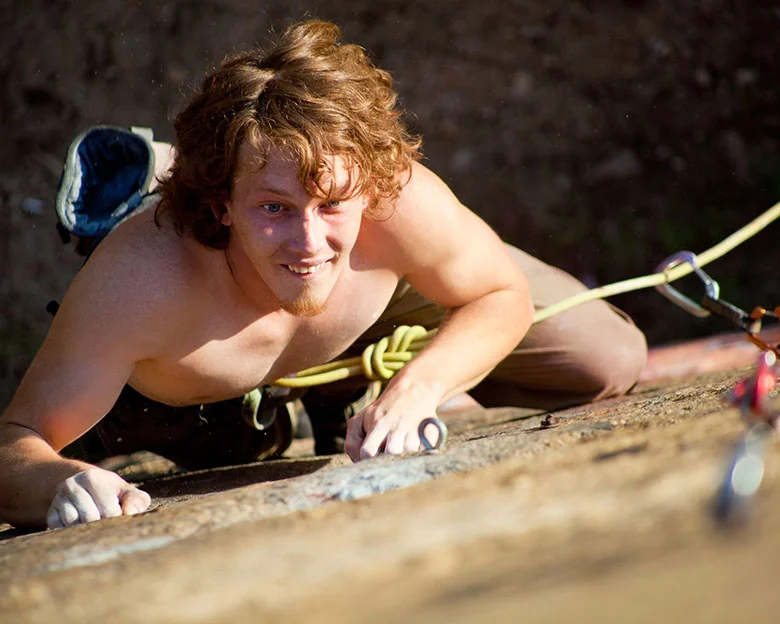
Rock climbing offers a range of benefits for individuals with different body types. Regardless of whether you’re tall, small, lean, or strong, this sport can help enhance your overall physical fitness and provide unique advantages based on your body composition.
Taller climbers, have an advantage with their longer limbs when reaching for holds that may be out of reach for others. On the other hand, smaller climbers have an easier time maneuvering through narrow spaces and finding footholds in tight spots.
Lean climbers benefit from their relatively lightweight body composition, allowing them to move more efficiently and quickly up the wall. Stronger climbers possess greater upper-body strength, which is crucial for pulling themselves up and maintaining a stable grip on challenging routes.
Regardless of your body type, rock climbing engages multiple muscle groups such as your forearms, legs, back, and core. This helps build strength and improves overall endurance and muscular stability.
Furthermore, the constant problem-solving involved in rock climbing exercises your brain as much as it does your muscles.
Rock climbing is a sport that emphasizes balance and athleticism rather than bulk. It promotes a fit physique without necessarily focusing on gaining excessive muscle mass or looking like a traditional athlete.
While each body type may have its own unique advantages in rock climbing, anyone can participate and benefit from this exhilarating activity regardless of their size or shape – both physically and mentally.
Don’t Let Your Body Type Stop You From Climbing
There is no one-size-fits-all answer to the best body type for rock climbing.
While certain body types may have advantages in terms of strength or flexibility, skills, and technique are just as important factors.
Ultimately, the best body type for climbing is one that combines a strong upper body, lean physique, and mental focus to conquer any wall.
Don’t worry about fitting into a specific mold – embrace your unique physique and just start climbing!
FAQs
1. What is the best body type for rock climbing?
There is no one-size-fits-all answer to this question as different body types can excel in different aspects of rock climbing. However, generally speaking, climbers with a lean and muscular build tend to have an advantage due to their strength-to-weight ratio.
2. Can someone with a larger body type be successful at rock climbing?
Yes, individuals with larger body types can still be successful at rock climbing. While certain physical characteristics may present challenges, such as limited flexibility or higher weight-to-strength ratio, determination, technique, and proper training can help individuals overcome these obstacles.
3. Are there any specific body attributes that are particularly beneficial for rock climbing?
Certain attributes such as strong finger grip strength, good balance and coordination, flexibility in the hips and shoulders, and core stability are highly advantageous for rock climbers. However, it’s important to note that these attributes can be developed through dedicated training regardless of initial natural abilities.
4. Can I improve my body’s fitness for rock climbing through targeted exercises?
Absolutely! Rock climbers can enhance their performance by incorporating specific exercises into their training regimen that target areas such as grip strength (through finger pull-ups or hangs), upper-body and core strength (through pull-ups or planks), flexibility (through yoga or stretching routines), and cardiovascular endurance (through aerobic activities like running or cycling). Consistent practice will lead to improved overall fitness for better climbing performance.


